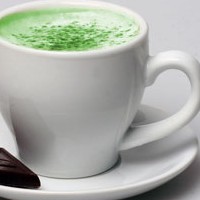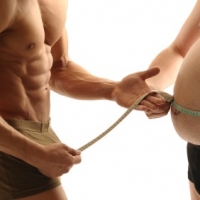Burning Calories & Controlling Appetite

Losing weight and keeping it off is not a simple process as evidenced by the fact that the majority of persons who lose weight regain the weight within one to five years.1 The reasons for over 80 percent recidivism rate in gaining back weight previously lost are multifactorial2—it is not simply an issue of calories in/calories out. There are different issues as to why some people have more difficulty losing weight than others—and those issues are not necessarily the same from one person to another. Two such issues are being a slow calorie burner and having difficulty controlling appetite/hunger. This article will discuss these issues and presents some of the dietary supplement ingredients that may help.
Slow calorie burning
Some individuals seem to burn calories and lose weight very
slowly despite the fact that they are reducing their caloric intake
and/or exercising. In fact, research3 has shown that many
individuals follow a reduced or low calorie diet for 3–6 months
actually burned fewer calories each day then before they started
dieting. In another study,4 the number of calories burned each
day decreased in individuals following a calorie-restricted
diet, in individuals following a calorie-restricted diet and also
exercising, and in individuals following a very low-calorie diet.
This phenomenon appears to be a “metabolic adaptation” to
long-term diet/exercise programs for some individuals.
Difficulty controlling appetite/hunger
Some individuals seem to be frequently hungry, have a large
appetite, and reach satiety slowly. These are actually separate
but related issues. Hunger occurs as the result of physiological
cues telling us we are hungry, such as an empty or growling
stomach, a decrease in blood glucose levels, and alterations
in circulating hormones—and two out of three people indicate
that hunger causes them to cheat on their diet.5 Appetite
is the psychological desire to eat, and is associated with
sensory experiences or aspects of food such as the sight and
smell of food, emotional cues, social situations, and cultural
conventions. Hunger acts as the more basic drive, while
appetite is more of a reflection of eating experiences. Satiety
is the physiological and psychological experience of “fullness”
that comes after eating and/or drinking. As was true for hunger
and appetite, a number of factors influence the experience of
satiety including gastric distention, elevations in blood glucose
and alterations in circulating hormones.
Citrus polyphenols: releasing fat from fat cells
Our fat cells contain fat in the form of triglycerides. To lose weight, our fat cells have to release the fat they contain, a
process known as lipolysis. Nevertheless, some people seem to
have fat cells that stubbornly hold onto the fat. That’s where
citrus polyphenols may be able to help. Research has shown
that a blend of grapefruit, blood orange, orange and Guarana
extract providing polyphenols was able to stimulate lipolysis.
In a 12-week, randomized, double-blind, placebo-controlled
trial,6 95 overweight men and women used 450 mg of the
aforementioned citrus polyphenol blend or a placebo twice
daily. The results were that those using the citrus polyphenols
lost 63 percent more body weight than those using the placebo.
Furthermore, those in the citrus polyphenols group lost two
inches off their waists and hips, compared to about 1/2 inch for
the placebo group. Even more significant is the fact that free
fatty acids (FFA) levels in the blood increased by 329 percent
in the citrus polyphenols group, compared to only 33 percent in
the placebo group. This is important since an increase in FFA is
an indication of lipolysis (i.e. fat cells giving up their fat). Another
12-week, randomized, double-blinded, placebo-controlled trial7
with the citrus polyphenol blend showed similar results.
Caffeine: a calorie-burner
Research has indicated that various doses of caffeine can have
a thermogenic effect, causing people to burn more calories.
Interestingly, more isn’t always better. In one double-blind
study,8 100 mg of caffeine was more effective than 200 or 400
mg in increasing thermogenesis/calorie burning. Furthermore,
caffeine intake was associated with a greater release of fat
compared to placebo. In another double-blind study,9 100 mg
of caffeine resulted in a 16 percent increase in calorie-burning
over a 2-hour period compared with placebo.
Oligofructose prebiotic fiber: an appetite reducer
Oligofructose is a type of fiber (typically derived from chicory),
which can act as a prebiotic—that is, a source of food for friendly
bacteria or probiotics. In addition, research shows it can help
reduce appetite. In a randomized, double-blind, parallel, placebo-controlled
trial,10 men and women received 16 g of oligofructose
daily (in divided doses) for two weeks. Results showed that those
receiving the oligofructose had an increase in friendly bacteria
and lower hunger rates. Furthermore, oligofructose significantly
increased levels of certain hormones that help control appetite
(glucagon-like peptide 1 and peptide YY). Consequently, the
oligofructose group ate 6.67 percent less calories and had
significantly reduced hunger compared to placebo group. Another
single-blinded, crossover, placebo-controlled design, study11 with
oligofructose showed similar results.
Garcinia cambogia: reducing calorie intake
Garcinia cambogia is a plant found in tropical regions of Asia,
Africa, and Polynesia.12 The active compound in Garcinia
cambogia is known as (-)-hydroxycitric acid (HCA).13 Among
other properties, this compound may help reduce calorie intake.
In a 6-week randomized placebo-controlled single-blinded
cross-over trial14 overweight subjects consumed a drink with
Garcinia cambogia providing 300 mg HCA. They took this drink
or a placebo three times daily for two weeks. The results were
that the calories consumed were decreased by 15–30 percent
with HCA compared to placebo. Also, body weight tended to
decrease, and satiety was sustained.
Conclusion
Losing weight and keeping it off is tough to do, and absolutely
requires the use of a healthy diet and exercise program for long-term
success. However, the use of citrus polyphenols, caffeine,
oligofructose and Garcinia cambogia may help make the job
easier and lead to a better outcome.
References
- Wysoker A. A Conceptual Model of Weight Loss and Weight Regain: An Intervention for Change J Am Psychiatr Nurses Assoc. 2002; 8(5):168-173.
- Rosenbaum M, Leibel RL. Adaptive thermogenesis in humans. Int J Obes (Lond). 2010;34 Suppl 1:S47-55.
- Redman LM, Heilbronn LK, Martin CK, et al. Metabolic and behavioral compensations in response to caloric restriction: implications for the maintenance of weight loss. PLoS One 2009;4(2):e4377.
- Heilbronn LK, de Jonge L, Frisard MI, et al. Effect of 6-month calorie restriction on biomarkers of longevity, metabolic adaptation, and oxidative stress in overweight individuals: a randomized controlled trial. JAMA 2006;295(13):1539-48.
- Palmer S. Taking Control of Hunger — Lessons on Calming Appetite and Managing Weight. Today’s Dietitian 2009;11(4):28.
- Dallas C, Gerbi A, Elbez Y, Caillard P, Zamaria N, Cloarec M. Clinical Study to Assess the Efficacy and Safety of a Citrus Polyphenolic Extract of Red Orange, Grapefruit, and Orange (Sinetrol-XPur) on Weight Management and Metabolic Parameters in Healthy Overweight Individuals. Phytother Res. 2013 Apr 3. doi: 10.1002/ptr.4981. [Epub ahead of print]
- Dallas C, Gerbi A, Tenca G, Juchaux F, Bernard FX. Lipolytic effect of a polyphenolic citrus dry extract of red orange, grapefruit, orange (SINETROL) in human body fat adipocytes. Mechanism of action by inhibition of cAMPphosphodiesterase (PDE). Phytomedicine. 2008 Oct;15(10):783-92.
- Astrup A, Toubro S, Cannon S, Hein P, Breum L, Madsen J. Caffeine: a double-blind, placebo-controlled study of its thermogenic, metabolic, and cardiovascular effects in healthy volunteers. Am J Clin Nutr. 1990 May;51(5):759-67.
- Hollands MA, Arch iRS, Cawthrone MA. A simple apparatus for comparative measurements of energy expenditure in human subjects: the thermic effect of caffeine. Am J Clin Nutr. 1981;34:2291-4.
- Cani PD, Lecourt E, Dewulf EM, Sohet FM, Pachikian BD, Naslain D, De Backer F, Neyrinck AM, Delzenne NM. Gut microbiota fermentation of prebiotics increases satietogenic and incretin gut peptide production with consequences for appetite sensation and glucose response after a meal. Am J Clin Nutr. 2009 Nov;90(5):1236-43.
- Cani PD, Joly E, Horsmans Y, Delzenne NM. Oligofructose promotes satiety in healthy human: a pilot study. Eur J Clin Nutr. 2006 May;60(5):567-72.
- The wealth of India (raw materials), Vol. IV. New Delhi, India: CSIR; 1956: 99-108.
- Jena BS, Jayaprakasha GK, Singh RP, Sakariah KK. Chemistry and biochemistry of (-)-hydroxycitric acid from Garcinia. Journal of agricultural and food chemistry. 2002;50(1):10-22.
- Westerterp-Platenga MS, Kovacs EMR. The effect of (-)-hydroxycitrate on energy intake and satiety in overweight humans. Int J Obesity 2002;26:870-872.
-
Do Fast Weight Loss Diet a Good Idea? No, Unless It is Based Around this One Important Rule
This then leads to a lot of people who are looking for the next best
-
Drink Oo Long Tea To Lose Weight
Wu Long tea or commonly called Oolong cha or Oolong tea is a literal t
-
Burn Fat Not Sugar!
You are going to be pleasantly surprised! Most peopl
-
Which is a Better Fat Burning Method: Cardio or Strength Training?
I have a confession to make. I am a master fitness trainer and I actu
-
Raspberry Supplement Significant Info
In particular Raspberry Ketone have already been highly endorsed la
-
Quick Weight Loss Plan - Discover the Hottest Diet to Get Quick, Natural, and Permanent Weight Loss!
Is there a quick weight loss plan out there that actually works? Well,
- DON'T MISS
- Walking Regularly to Stay Healthy and Active
- Water Can Really Help You Lose Weight
- HCG Dieter Gourmet Cookbook - Best HCG Recipes
- You Can Lose Weight By Not Trying To Lose Weight
- Tips For Using Hypnosis To Help Lose Weight
- Diet Pills Can Be Harmful - Try Fat Loss 4 Idiots - Does The Fat Loss 4 Idiots Diet Work?
- How to Choose Credible Weight Loss Pills Online
- Every Other Day Diet - Every Other Day Diet eBook Review
- Is cheap Hcg A Good Idea?
- What Is 80/10/10?




